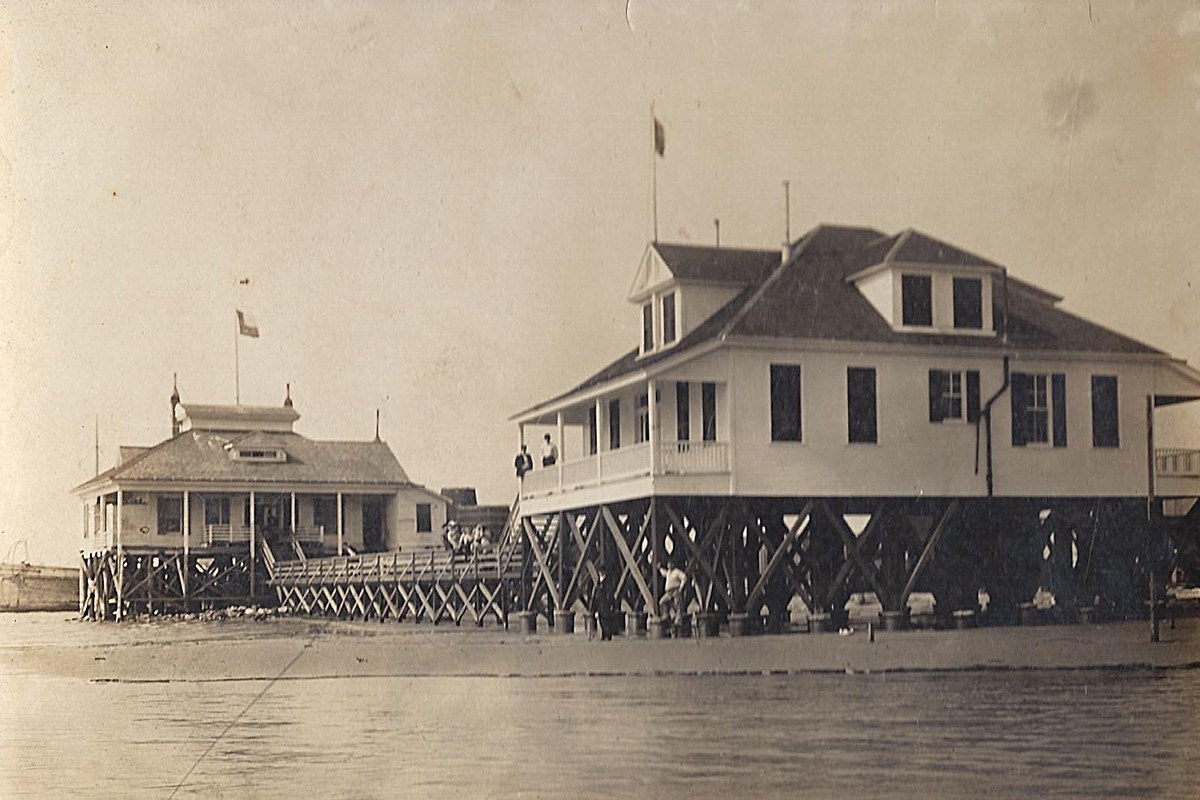The windswept shores of Galveston Island greeted an estimated 750,000 immigrants from all over the world between 1839 and 1920. “Here in Galveston,” wrote novelist Edna Ferber in A Kind of Magic (Doubleday, 1963), “the humidity was like a clammy hand held over your face. Yet the city had a ghostly charm.”
Many new arrivals must have agreed. During the second half of the 19th century, Galveston transformed itself into the commercial and shipping center of Texas, yet many newcomers were not allowed to see the city until after a period of quarantine.
In 1839, Galveston instituted the first maritime quarantine system in the Republic of Texas. Officials believed that the influx of immigrants contributed to the spread of contagious diseases, particularly yellow fever, which caused more than 1,100 deaths in 1867 alone. How mosquitoes transmit yellow fever was not yet understood, and businesses complained that quarantines disrupted travel and commerce.
Galveston built its first quarantine station on the eastern tip of Galveston Island in 1853. Ships suspected of contamination were not allowed to enter the port until the quarantine officer inspected the vessel. If the officer discovered any infection among passengers, or if the ship had traveled from an infected port, a 20-day quarantine was imposed.
A larger quarantine station, built by the city in 1870, was severely damaged by hurricane winds and replaced by new facilities in 1879 and again in 1885 when the state took over quarantine operations. These stations were at Fort Point on the south side of the entrance to Galveston Bay.
Locations for the centers changed slightly over the years. One was built on Pelican Spit, and, in 1902, another was built at the site of the original 1853 station. In 1919, the city’s station merged with federal operations at a facility on Pelican Island, which continued to operate until 1950.
The first large groups of Europeans to arrive in Galveston were Germans drawn to Texas by the promise of cheap land and religious freedom. The 1850 census showed that more than 40 percent of the city’s population had German surnames.
“My mother, Anna Klasek, and her family arrived in Galveston in July 1914, on the ship Neckar,” says Robert Johnson of Brenham, a member of Bluebonnet Electric Cooperative. “She was 4 years old and the second youngest of seven sisters. They were from Austria, and I understand that they were aboard the last ship of immigrants to leave the German port of Bremen before war was declared.”
When a ship arrived and was safely anchored offshore, the master of the vessel signaled the quarantine station so a surgeon could sail out aboard the station’s launch, Seaway. The surgeon and his nurses checked for contagious diseases and examined the ship’s papers to ensure that a clean bill of health had been issued at the last port. Anyone who showed signs of disease was removed to the quarantine station. If the surgeon found no sign of disease, the ship could proceed to port.
“My great aunt, Jessie Flowers Naylor, worked as a nurse at the Galveston Quarantine Station while she was taking her training at John Sealy Hospital in Galveston in 1917,” says Julia Newbury of Belton. “She boarded ships with the rest of the medical team to examine people who wanted to go ashore. It must have taken courage for her to go aboard foreign ships and deal with illnesses and all kinds of personalities and languages.”
Immigration through Galveston slowed after World War I when U.S. laws set strict quotas for each immigrant group. By the middle of the 20th century, the need for maritime quarantine lessened. The last Galveston quarantine station was demolished in 1972, and the site is now the home of Pelican Island’s Seawolf Park.
In his book The Galveston Immigration and Quarantine Stations (University of Texas Medical Branch at Galveston, 1994), author Harrold K. Henck Jr. notes the impact of the port. “The legacy of Galveston’s immigrants not only influenced the growth of the city but drove a wedge of European culture through the heart of Texas.”
——————–
Martha Deeringer, a member of Heart of Texas EC, lives near McGregor.


